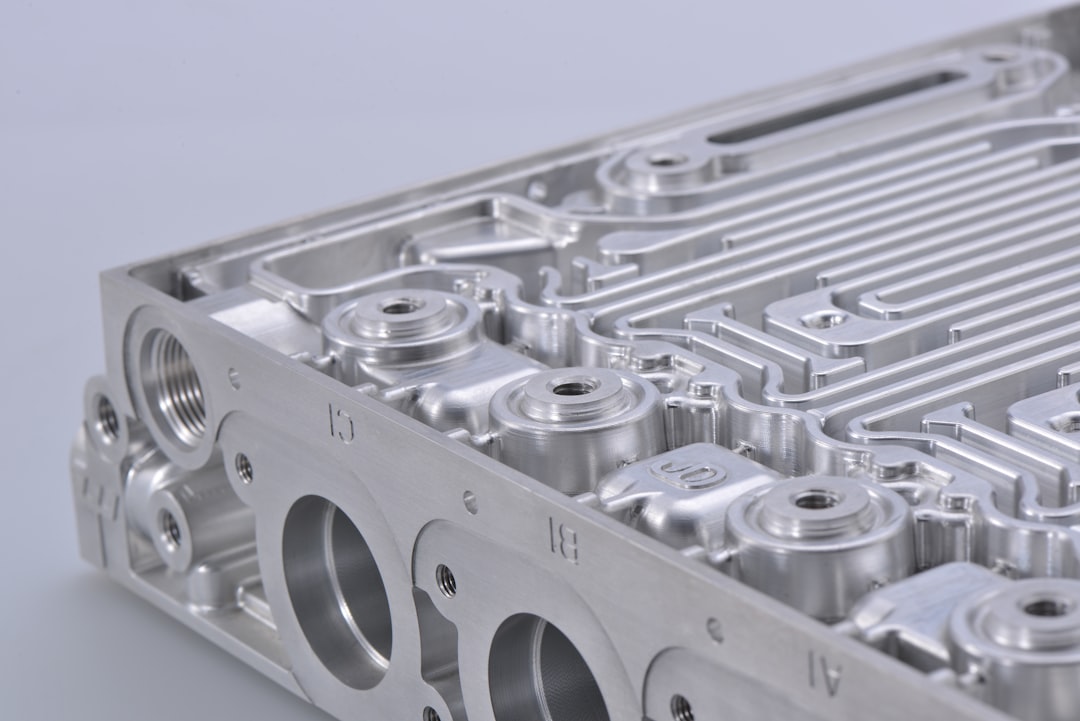What is it about?
In comparison to fullerenes, PDIs absorb the light stronger, they are cheaper, and exhibit acceptable electron mobilities. Hence, intensifying the research on PDIs electron acceptors is a top priority for the benefit of OPV devices. Research on PDI-based OPVs is ongoing for decades but still the PCE of these cells has remained poor. We describe a methodology for fabricating PDI-based OPVs with a PCE close to 4% by using a low-cost monomeric PDI derivative, which can be processed in solution.
Featured Image
Why is it important?
To this end, high PCE values of PDI-based OPVs have been achieved only after using PDI-dimers as electron acceptors. In this work we demonstrate how the use of a less expensive PDI monomer can deliver similarly high PCEs. By using an additive, the PCE reaches a value of 3.7%. We discuss on the factors that can increase further the efficiency of PDI-based OPV devices. The additive improves the excited state dissociation efficiency, the charge mobility ratio and the charge extraction efficiency.
Read the Original
This page is a summary of: Fullerene-free organic solar cells with an efficiency of 3.7% based on a low-cost geometrically planar perylene diimide monomer, Journal of Materials Chemistry A, January 2014, Royal Society of Chemistry,
DOI: 10.1039/c4ta02851a.
You can read the full text:
Resources
Intermolecular Interactions of Perylene diimides in Photovoltaic Blends of Fluorene Copolymers: Disorder Effects on Photophysical Properties, Film Morphology and Device Efficiency
Nonplanar Perylene Diimides as Potential Alternatives to Fullerenes in Organic Solar Cells
Perylene–Diimide Based Non-Fullerene Solar Cells with 4.34% Efficiency through Engineering Surface Donor/Acceptor Compositions
On the role of aggregation effects in the performance of perylene-diimide based solar cells
Effect of Local and Global Structural Order on the Performance of Perylene Diimide Excimeric Solar Cells
Selecting a Donor Polymer for Realizing Favorable Morphology in Efficient Non-fullerene Acceptor-based Solar Cells
The Effect of Solvent Additive on the Charge Generation and Photovoltaic Performance of a Solution-Processed Small Molecule:Perylene Diimide Bulk Heterojunction Solar Cell
A high-performing solution-processed small molecule:perylene diimide bulk heterojunction solar cell.
Charge generation and transport in efficient organic bulk heterojunction solar cells with a perylene acceptor
Room-Temperature Phase Demixing in Bulk Heterojunction Layers of Solution-Processed Organic Photodetectors: the Effect of Active Layer Ageing on the Device Electro-optical Properties
Liquid Crystalline Perylene Diimides: Architecture and Charge Carrier Mobilities
Improved Performance of Perylene-Based Photovoltaic Cells Using Polyisocyanopeptide Arrays
The Dependence of Device Dark Current on the Active-Layer Morphology of Solution-Processed Organic Photodetectors
Delayed Luminescence Spectroscopy of Organic Photovoltaic Binary Blend Films: Probing the Emissive Non-geminate Charge Recombination
Correlating Emissive Non-Geminate Charge Recombination with Photocurrent Generation Efficiency in Polymer/Perylene Diimide Organic Photovoltaic Blend Films
Perylene as an Electron Acceptor in Organic Solar Cells: Charge Generation and Relaxation Studied by Ultrafast Transient Absorption
Improving the layer morphology of solution-processed perylene diimide organic solar cells with the use of a polymeric interlayer
Direct Observation of Ultrafast Excimer Formation in Covalent Perylenediimide Dimers Using Near-Infrared Transient Absorption Spectroscopy
Efficiency-Limiting Processes in Low-Bandgap Polymer:Perylene Diimide Photovoltaic Blends
X-ray photoemission spectroscopy study of vertical phase separation in F8BT:PDI/ITO films for photovoltaic applications
n-Type Charge Transport and Mobility of Fluorinated Perylene Bisimide Semiconductors
High-Efficiency Non-Fullerene Organic Solar Cells Enabled by a Difluorobenzothiadizole-Based Donor Polymer Combined with a Properly Matched Small Molecule Acceptor
Contributors
The following have contributed to this page










